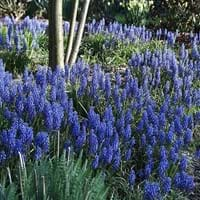Life Span
Biennial and Perennial
Perennial
Type
Vegetable
Bulb or Corm or Tuber
Origin
Europe, Western Asia
Mediterranean, Southeastern Asia
Types
Not Available
Not available
Habitat
waste ground, wastelands
Fields, Open areas, Terrestrial
USDA Hardiness Zone
4-9
Not Available
AHS Heat Zone
7-1
Not Available
Sunset Zone
A1, A2, A3, H1, H2, 1a, 1b, 2a, 2b, 3a, 3b, 4, 5, 6, 7, 8, 9, 10, 11, 12, 13, 14, 15, 16, 17, 18, 19, 20, 21, 22, 23, 24
21,22
Habit
Rosette/Stemless
Clump-Forming
Minimum Height
Not Available
Minimum Width
Not Available
Flower Color
Yellow
White, Yellow, Blue, Purple, Pink, Olive, Blue Violet
Flower Color Modifier
Bicolor
Bicolor
Fruit Color
Brown, Black
Brown, Black
Leaf Color in Spring
Green
Not Available
Leaf Color in Summer
Green
Light Green
Leaf Color in Fall
Green
Several shades of Green
Leaf Color in Winter
Not Available
Light Green
Leaf Shape
Pinnate
Narrow
Plant Season
Summer
Not Available
Sunlight
Full Sun
Full Sun, Partial Sun
Growth Rate
Medium
Not Available
Type of Soil
Loam
Not Available
The pH of Soil
Neutral
Not Available
Soil Drainage
Well drained
Well drained
Bloom Time
Summer
Not Available
Tolerances
Drought
Drought
Where to Plant?
Ground, Pot
Container, Ground, Pot
How to Plant?
Seedlings
From bulbs, From Rhizomes, Seedlings
Plant Maintenance
Medium
Medium
Watering Requirements
Average Water Needs, Do Not over Water, Keep the ground moist but not water-logged
Get enough water whenever the soil is dry, Keep the ground moist but not water-logged, Keep the Soil well drained
In Summer
Lots of watering
Lots of watering
In Spring
Moderate
Moderate
In Winter
Average Water
Average Water
Soil pH
Neutral
Not Available
Soil Type
Loam
Not Available
Soil Drainage Capacity
Well drained
Well drained
Sun Exposure
Full Sun
Full Sun, Partial Sun
Pruning
Remove damaged leaves, Remove dead branches, Remove dead leaves
Remove damaged leaves, Remove dead branches, Remove dead leaves
Fertilizers
All-Purpose Liquid Fertilizer
All-Purpose Liquid Fertilizer
Pests and Diseases
Aphids, Armyworm, Cutworms, Downy mildew, Pitch canker, Red blotch
Armored scales, Crown rot, Slugs
Plant Tolerance
Drought
Drought
Flower Petal Number
Not Available
Single
Fragrant Bark/Stem
Yes
No
Foliage Texture
Fine
Medium
Foliage Sheen
Matte
Glossy
Attracts
Butterflies
Bees, Butterflies
Allergy
Stomach burn
Diarrhea, Itchiness, Skin irritation, Stomach pain, Vomiting
Aesthetic Uses
Not Available
Cottage Garden, Landscape Designing
Beauty Benefits
Blood purifying, Good for skin
Not Available
Environmental Uses
Air purification
Air purification
Medicinal Uses
Aphrodisiac
Diuretic, Stimulates new cell growth
Part of Plant Used
Root
Buds, Flowers
Other Uses
Food for animals, Used as a nutritious food item
Traditional medicine, Used for fragrance
Used As Indoor Plant
Yes
Yes
Used As Outdoor Plant
Yes
Yes
Garden Design
Edible, Herb, Vegetable
Container, Cutflower, Mixed Border, Rock Garden / Wall
Botanical Name
PASTINACA sativa
MUSCARI
Common Name
Parsnip
Grape Hyacinth
In Hindi
चुकंदर
अंगूर जलकुंभी
In German
Pastinake
Traubenhyazinthen
In Spanish
Chirivía
Muscari
In Greek
Είδος δαυκίου
grape hyacinth
In Portuguese
cherivia
Muscari
In Polish
Pasternak
Szafirek
Phylum
Magnoliophyta
Tracheophyta
Class
Magnoliopsida
Magnoliopsida
Order
Apiales
Asparagales
Family
Apiaceae
Asparagaceae
Clade
Angiosperms, Asterids, Eudicots
Angiosperms, Monocots
Tribe
Not Available
Not Available
Subfamily
Not Available
Scilloideae
Number of Species
Not Available
Season and Care of Parsnip and Grape Hyacinth
Season and care of Parsnip and Grape Hyacinth is important to know. While considering everything about Parsnip and Grape Hyacinth Care, growing season is an essential factor. Parsnip season is Summer and Grape Hyacinth season is Summer. The type of soil for Parsnip is Loam and for Grape Hyacinth is Not Available while the PH of soil for Parsnip is Neutral and for Grape Hyacinth is Not Available.
Parsnip and Grape Hyacinth Physical Information
Parsnip and Grape Hyacinth physical information is very important for comparison. Parsnip height is 15.20 cm and width 7.60 cm whereas Grape Hyacinth height is Not Available and width Not Available. The color specification of Parsnip and Grape Hyacinth are as follows:
Parsnip flower color: Yellow
Parsnip leaf color: Green
Grape Hyacinth flower color: White, Yellow, Blue, Purple, Pink, Olive and Blue Violet
- Grape Hyacinth leaf color: Not Available
Care of Parsnip and Grape Hyacinth
Care of Parsnip and Grape Hyacinth include pruning, fertilizers, watering etc. Parsnip pruning is done Remove damaged leaves, Remove dead branches and Remove dead leaves and Grape Hyacinth pruning is done Remove damaged leaves, Remove dead branches and Remove dead leaves. In summer Parsnip needs Lots of watering and in winter, it needs Average Water. Whereas, in summer Grape Hyacinth needs Lots of watering and in winter, it needs Average Water.





